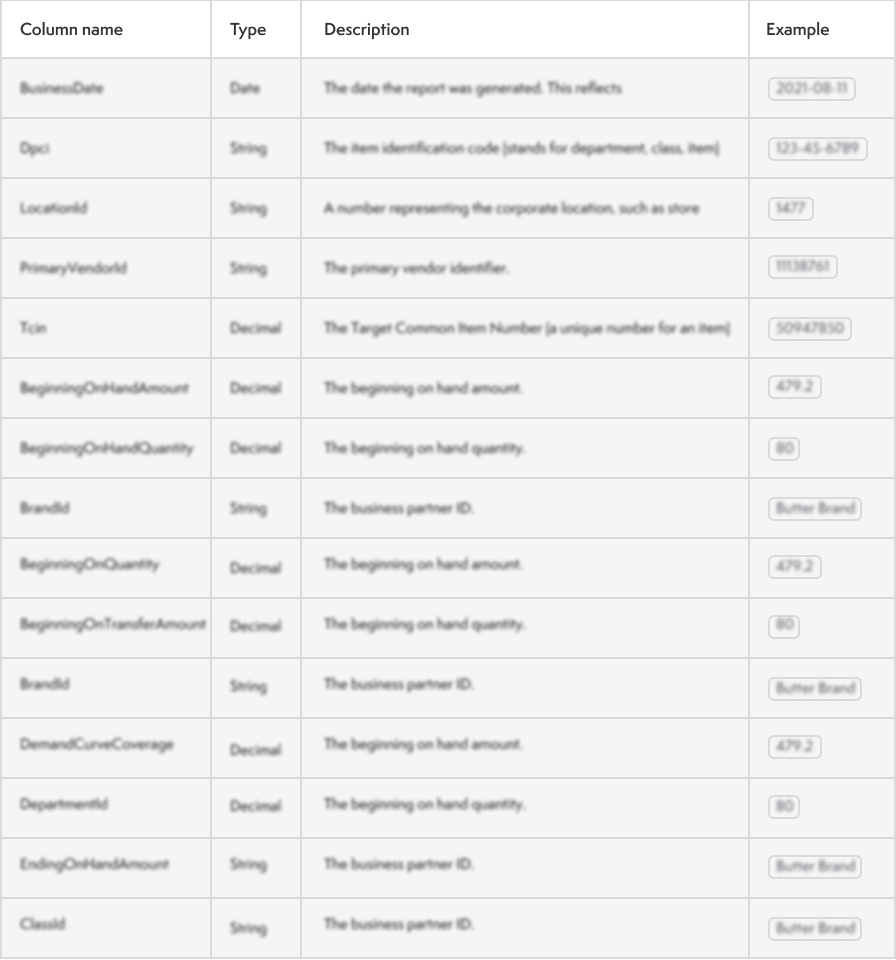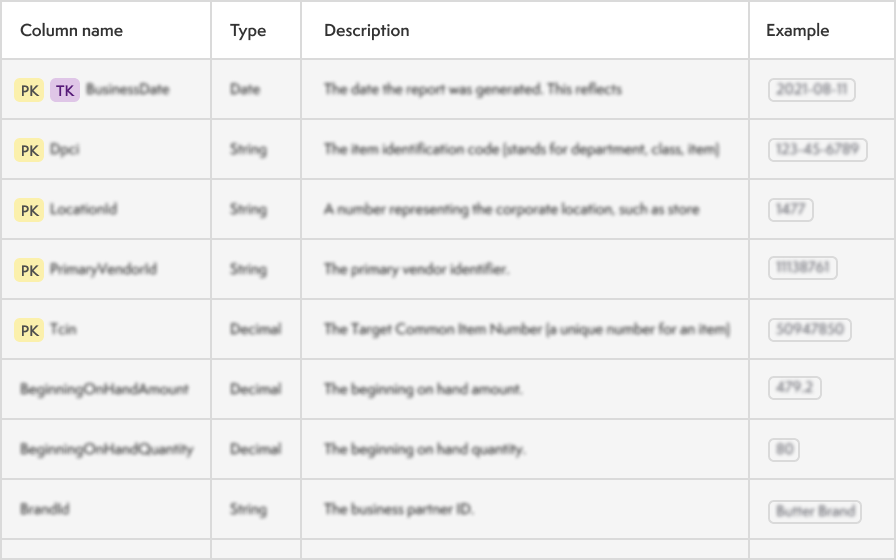Seamlessly integrate KeHE data into your current systems
Crisp ensures a reliable, secure flow of the data you get from KeHE into the tools and systems you rely on.
With Crisp, you can spend less time maintaining data pipelines and focus more on value-added analysis – and everyone from sales to operations and management gets the information they need, where they need it.
Choose from source or normalized data sets
Suppliers must already have access to KeHE data in order to use Crisp. Available data from KeHE typically includes:
- Active Items
- Inventory
- Inventory at Risk
- Daily Orders
- Instock Status
- Pack Size
- Product Details
- Promo Data
- Retailer Location
- Stores
Crisp provides detailed data model documentation that includes primary keys and reference tables. To view Crisp’s full data schema, contact our team.

Feed your current data workflows with timely source data

Get to insights faster with standardized data and clear dimensions
Data that your teams can trust
Crisp transforms raw retailer data into clean, organized data ready for database storage, modeling, and reporting. Now, analysts can focus on value-added analysis and business teams can trust the data they’re using.
Data structuring and schema modeling: Crisp organizes disparate retailer data sets, creating fact and dimension tables that can easily be joined using true primary keys and foreign keys. Crisp also meticulously documents how items and reports connect back to source data – making it easier to write queries, build reports, and work with new data sets.
Harmonization: Crisp creates common nomenclature across reports and data sources (e.g. “warehouse” vs “DC”) to simplify reporting and help you uncover insights across the business.
Cleansing: Crisp trims away extraneous characters that can bloat data sets and standardizes formatting for cleaner-looking data.
Augmentation: Crisp converts store location data into coordinates, enabling mapping visualizations and census data integration while ensuring consistency as naming conventions change.
Semantic modeling: Crisp translates raw retail data into the language of your business, serving as the foundation for everything from user-friendly analytics to AI/ML applications.
Portal changes? No problem.
Crisp handles portal changes with ease, quickly adapting to new versions while maintaining previous schema versions. You can decide when to make the switch, minimizing impact to downstream reporting.
Even when vendor portals go down, Crisp is still up – so you can rest easy that data is always available when you need it.

Interactive dashboards make data-driven decisions easy
Sales
Track sales trends, seasonal patterns, and growth with daily and year-over-year data
Inventory
Monitor store and DC inventory by product and region to meet customer demand and maximize sales.
Velocity
Understand velocity, year-over-year patterns, and key drivers of velocity by product, store format, and region.
Store in-stock
Track availability of your products and evaluate supply chain performance against forecasted demand.
Distribution
View product distribution by region and over time and understand how distribution contributes to overall sales.
Case Studies
-
J.M. Smucker Pet
J.M. Smucker used Crisp’s SOLYS platform to transform Target’s pet aisle into a haven for pet parents. Using real-time insights to drive seasonal sales, they were able to elevate the shopping experience both in-store and online.
-
PopSockets
PopSockets uses Crisp’s real-time data integration to optimize inventory, improve retailer relationships, and drive product innovation.
-
Mars’ Nature’s Bakery
Mars’ Nature’s Bakery uses Crisp to improve their supply chain efficiency and inventory management, supporting their rapid growth into 2025.